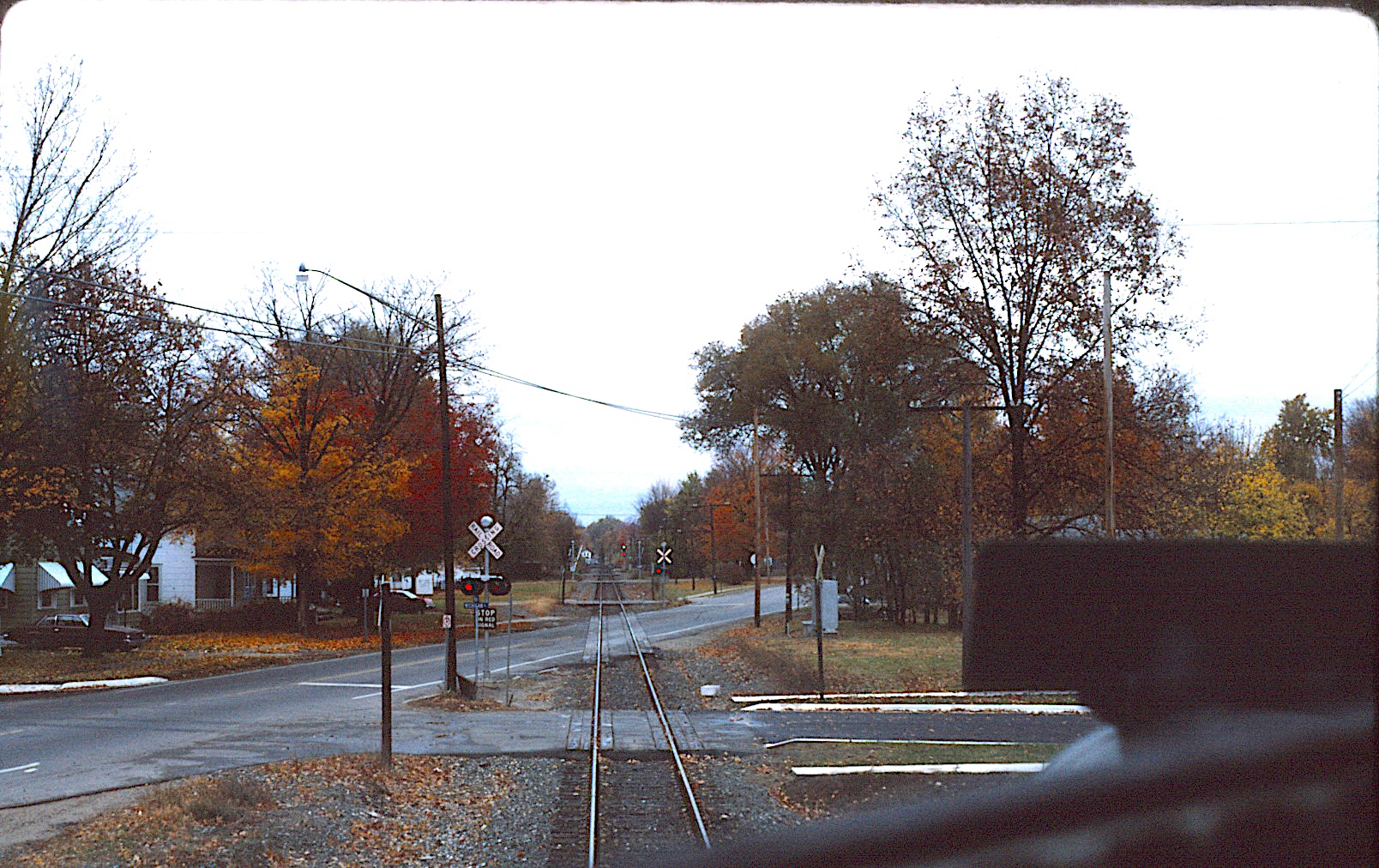Conrail's OCS E-Units
|
|
|---|---|
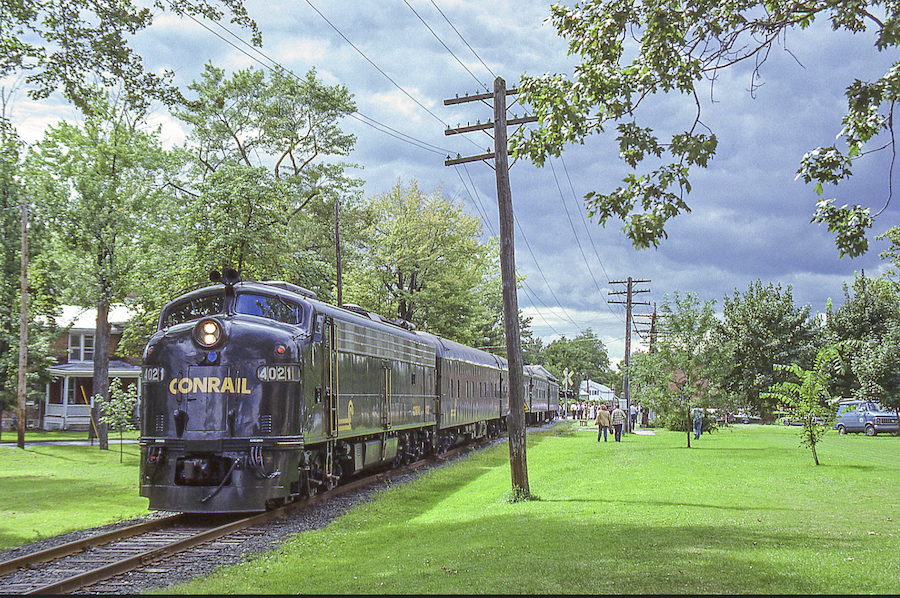 This Seneca Falls, NY scene from September 1989 is reminiscent of a Currier & Ives artwork from 100 years earlier. (A Todd Humphrey photo) blank | |
During Conrail's twenty-three existence (1976-1999), the
Office Car Special (OSC) was the most popular and widely photographed train on the system.
Their movement across the eastern half of the U.S (and occasionally Canada) were routinely
documented by young and old fans. Predominantly powered by EMD-built cab units, they were
our connection with past and the era of streamlining, a period in which function took a
backseat to design.
An OCS could take many forms depending on the train's purpose: Community awareness, employee relations, director's special, and Operation Life Safety. Frequently, the train was employed to assist the economic development department in generating new business; one such trip is briefly profiled here, along with the lineage of the OCS E-units.
October 1989 - Michigan
With two blasts of the horn, the 4020/4022 combo came to life and eased passed the Jackson
station; within moments we were gliding along the countryside at a modest pace intended to give
riders a good view of property available for new industrial and corporate facilities; Michigan's
Fall color change was just getting underway and was an added benefit. The 130-mile roundtrip lasted
approximately six hours.
The business cars comprising the economic development special were #3, a heavy-weight
observation built for the Michigan Central in 1928; it was positioned immediately behind the
E-units (and back running on what where once "home rails"). The remainder of train consisted
of a pair of coaches spliced by a full-length dome #55. Built for the Santa Fe, the stainless
unit was the only car not wearing a pullman green uniform. Next in line were two more coaches.
Punctuating the train's end was OCS theatre car #9 with its large picture window.
Highpoint of the trip for me was a cab ride in the #4022 as the train headed north on
the return leg of the four-star "business" outing. The accompanying photo was taken in some small
community south of Kalamazoo. Although the carbody swayed back-and-forth on occasion, the ride
inside the 4022's cab was surprisingly smooth. Candidly, there had not been many prior cab rides
on which to compare; my only other experience had taken place 20 years earlier outside Sault Ste
Marie, Ontario in an aging Canadian Pacific FA2 #4094.
|
|
The OCS Horses#4022 -- This E8A was the first and longest running member of Conrail's esthetic OCS motive power fleet. Built in March of 1951 (EMD 12232), the six-axle locomotive originally pulled varnish for the Erie Railroad as #833 (left photo, first row); it also carried that same road number after the eastern rail line merged in 1960 with neighboring Delaware Lackawanna & Western to become the new Erie-Lackawanna (first row, right photo). With the restructuring of the eastern railroad scene in 1976 and creation of Conrail, the fifty-year -old, steam-generator equipped E-unit became CR #4022 (center row, two photos). The Conrail demise in 1999 led the 4022 to the "non-active" roster of CSX as 9999 (no photo) until being acquired by Bennett and Eric Levin two years later. Ownership again transferred in 2007 to the New York & Greenwood & Lake (right photo, bottom row). Restoration work began that same year to return it to original Erie appearance (bottom row, left photo). Current status & future in question. | |
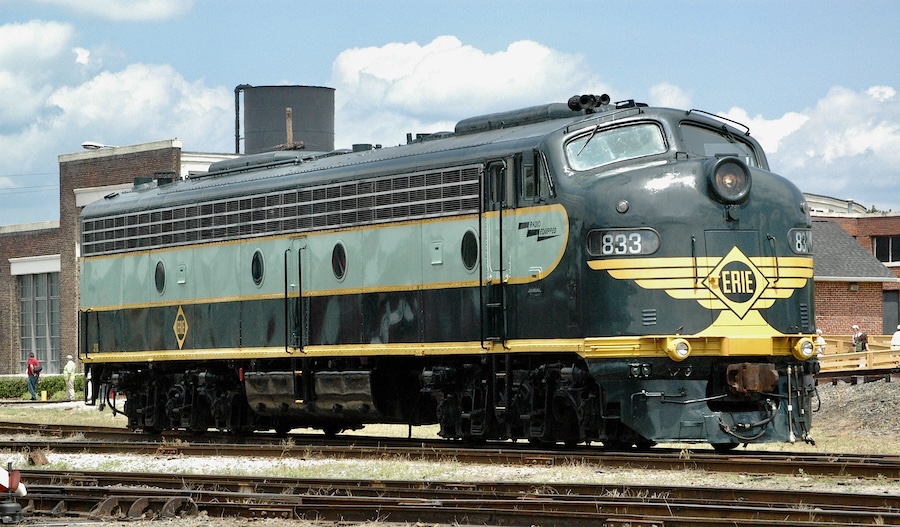 A restored #833 at Spencer (NC) museum on 31 May 2014
A restored #833 at Spencer (NC) museum on 31 May 2014
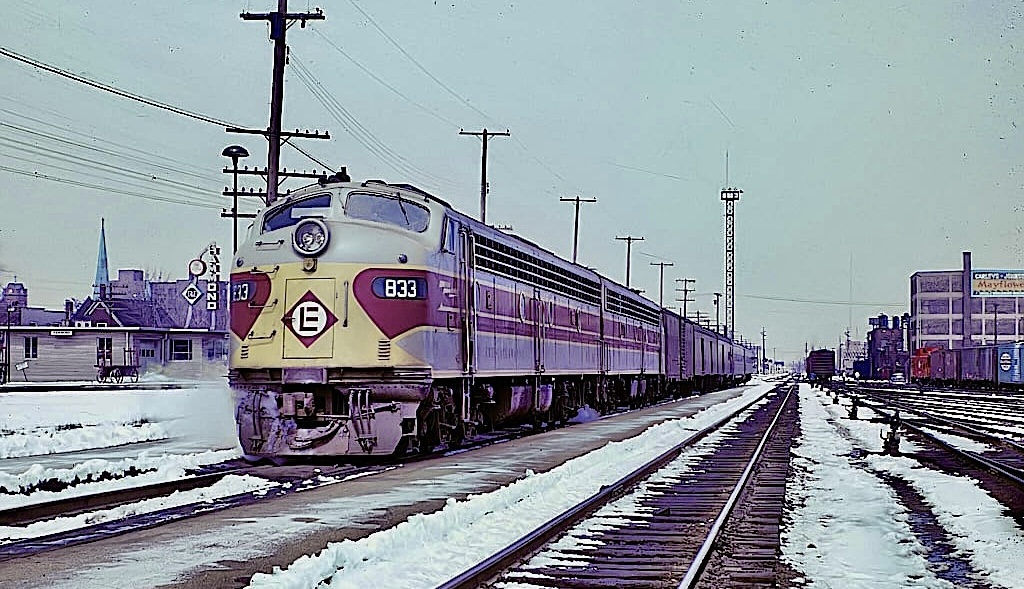 EL #833 w/Lake Cities at Hammond, IN in March 1964 (Marty Bernard photo)
EL #833 w/Lake Cities at Hammond, IN in March 1964 (Marty Bernard photo)
| |
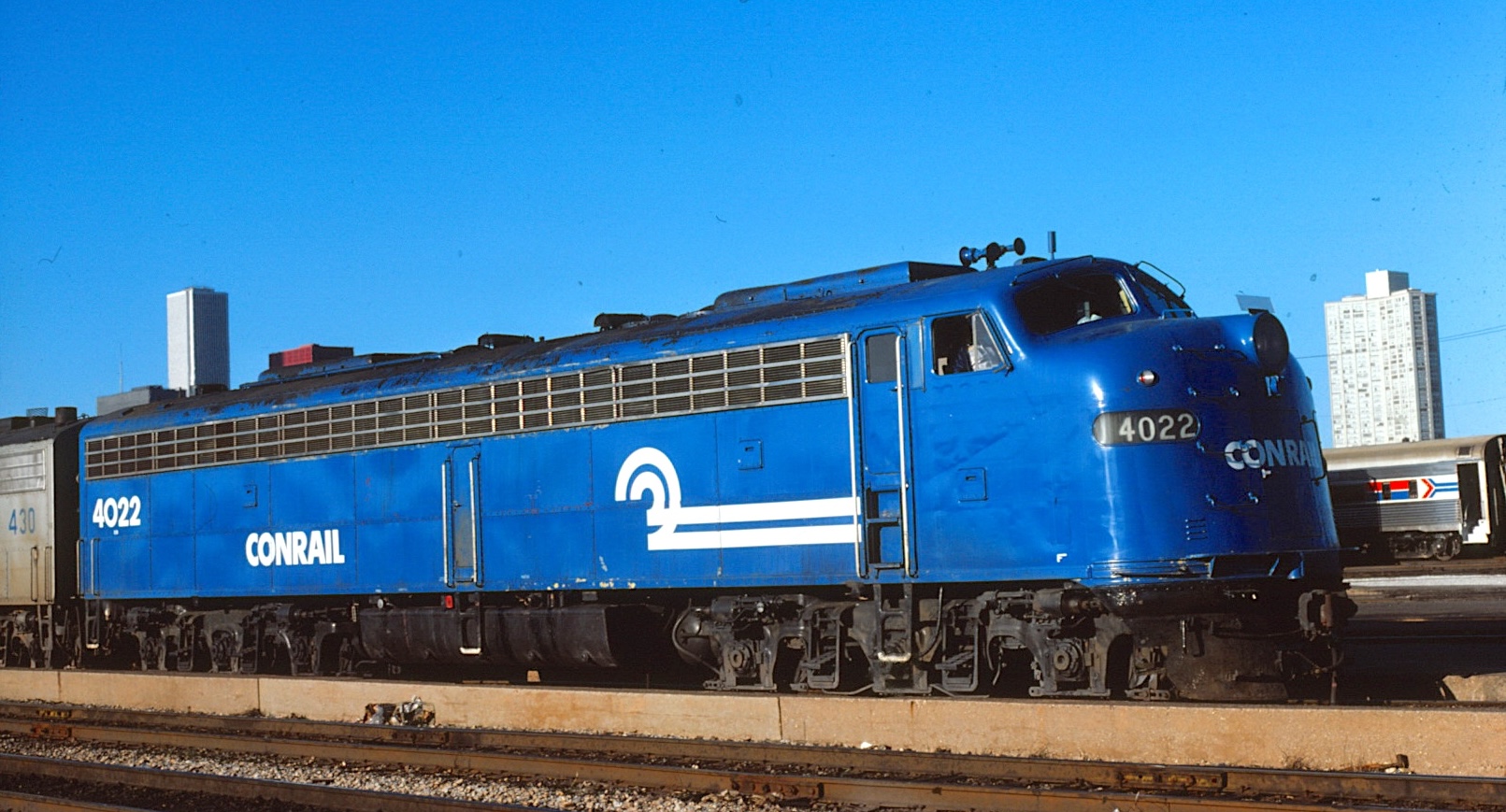 Conrail #4022 (w/black roof) at Chicago, IL in May 1977 - Paul Hunnell photo
Conrail #4022 (w/black roof) at Chicago, IL in May 1977 - Paul Hunnell photo
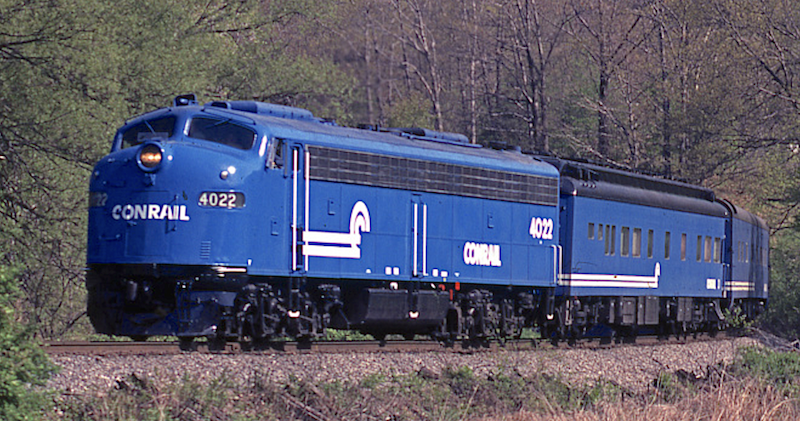 A pre-1983 "Big Blue" OCS at Lindley, NY on 21 May 1981 (Don Jilson photo)
A pre-1983 "Big Blue" OCS at Lindley, NY on 21 May 1981 (Don Jilson photo)
| |
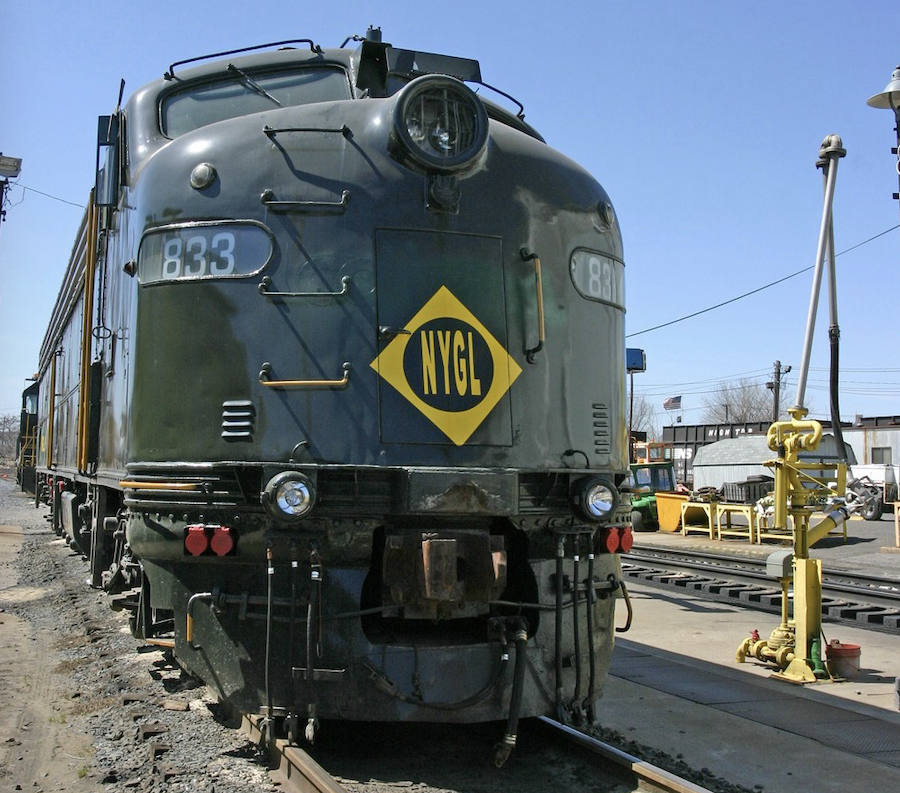 NYGL #833 sports new diamond-shaped nose treatment at Camden, NJ on 29 March 2007 (Sean McDonnell photo)
NYGL #833 sports new diamond-shaped nose treatment at Camden, NJ on 29 March 2007 (Sean McDonnell photo) | |
#4020 -- When EMD serial number 13102 left the LaGrange, IL manufacturing facility in September 1951, it wore the tuscan red and carried the banners of Pennsylvania Railroad as #5809. An tenure 18-year tenure came to an end on February 1, 1968 with the marriage between PRR and New York Central. The 2250-hp EMD became #4309 on the newly formed Penn Central. However, more changes laid ahead. With creation of Amtrak in March 1968, the #5809 and several brethren were conveyed to the new national passenger network; in the process it became Amtrak #498/315. In 1983, the locomotive was part of a "two for three" that swap the HEP-equipped unit go to Conrail as #4020. After some needed mechanical upgrades, the EMD received a fresh coat of pullman green and gold lettering, and then assigned to OCS service until the 1999 Conrail breakup. The E8A was eventually acquired by Bennett & Eric Levin, and in 2007 it underwent a major renovation that restored the unit to original PRR appearance as 5809. | |
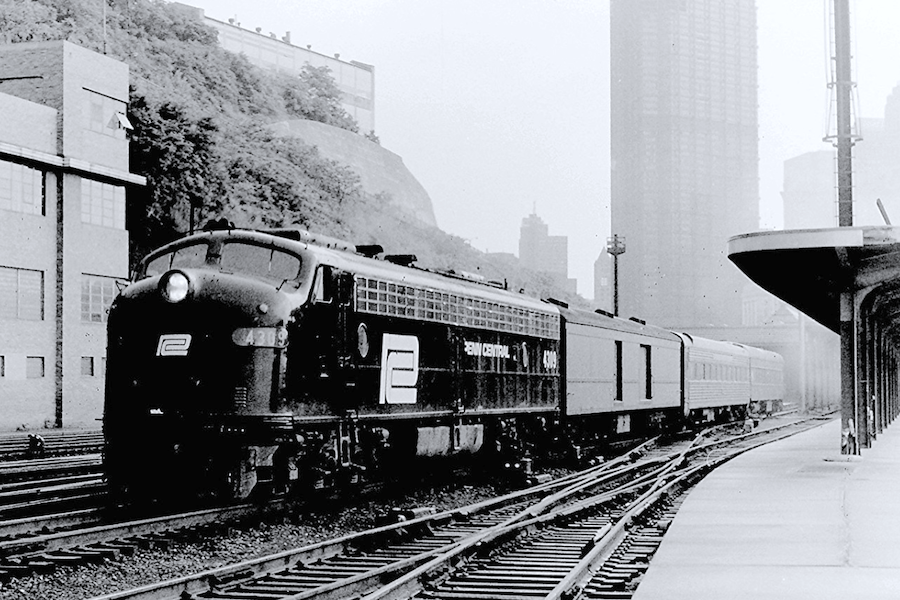 E8A #4309 was one of very few ex-PRR passenger units to receive full PC treatment. Pittsburgh,
PA in July 1970 (Hugh LLewelyn photo)
E8A #4309 was one of very few ex-PRR passenger units to receive full PC treatment. Pittsburgh,
PA in July 1970 (Hugh LLewelyn photo)
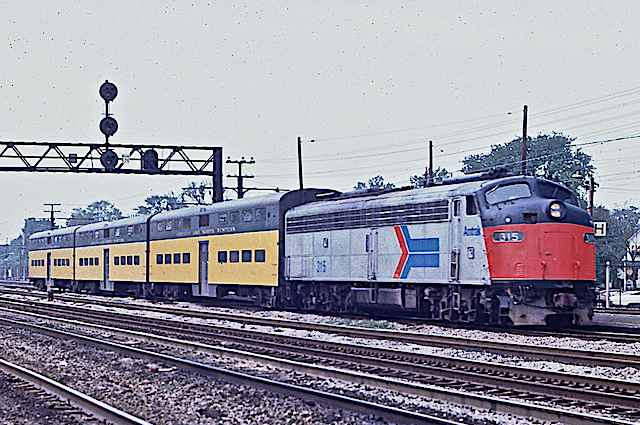 Amtrak #315 has "Abe Lincoln" w/ C&NW bi-level coaches at Homewood, IL on 20 May 1975 (Bill Johnson photo)
Amtrak #315 has "Abe Lincoln" w/ C&NW bi-level coaches at Homewood, IL on 20 May 1975 (Bill Johnson photo)
| |
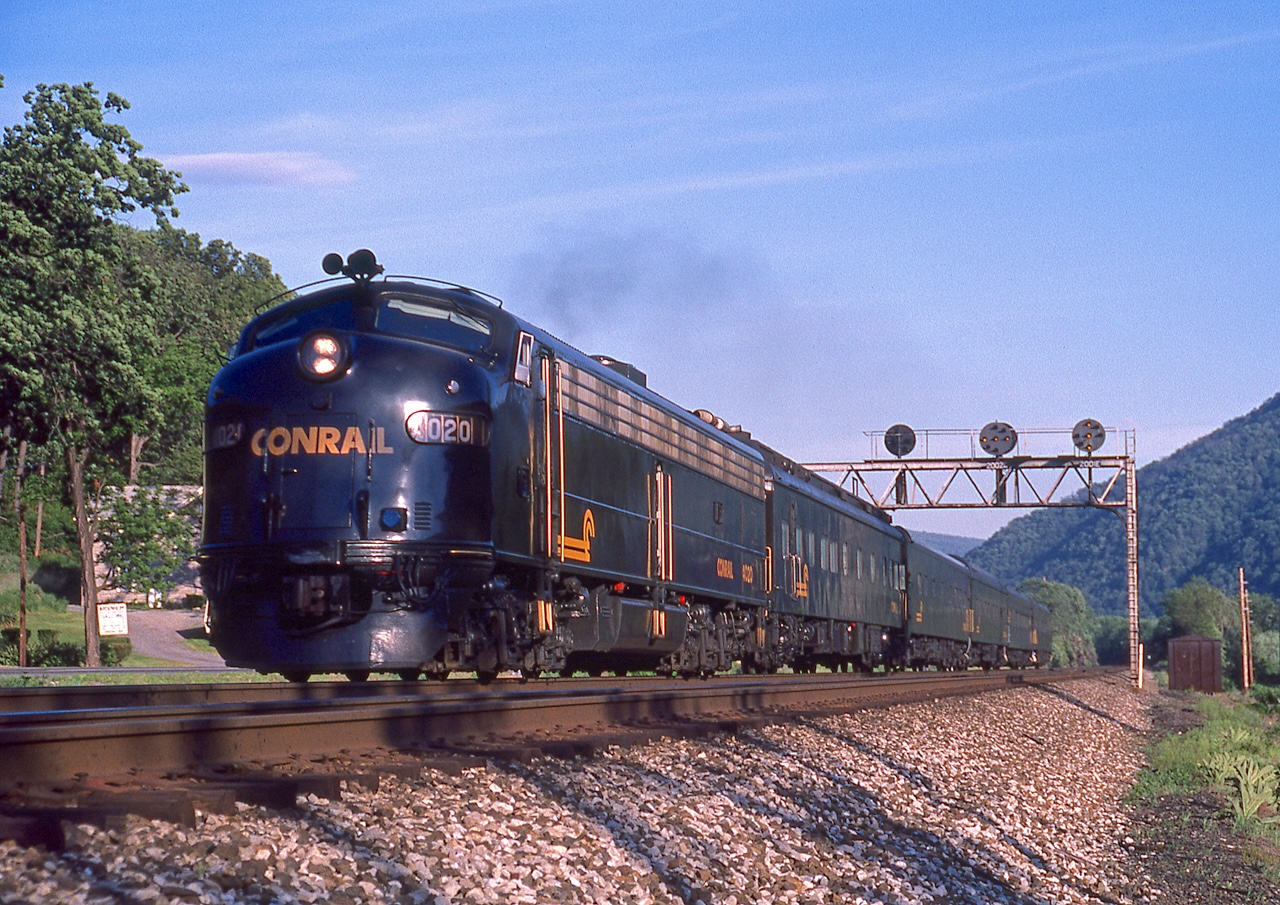 #4020 hustles a short w/b at Ardenheim, PA on 5 June 1988 (Bill Kalkman photo)
#4020 hustles a short w/b at Ardenheim, PA on 5 June 1988 (Bill Kalkman photo)
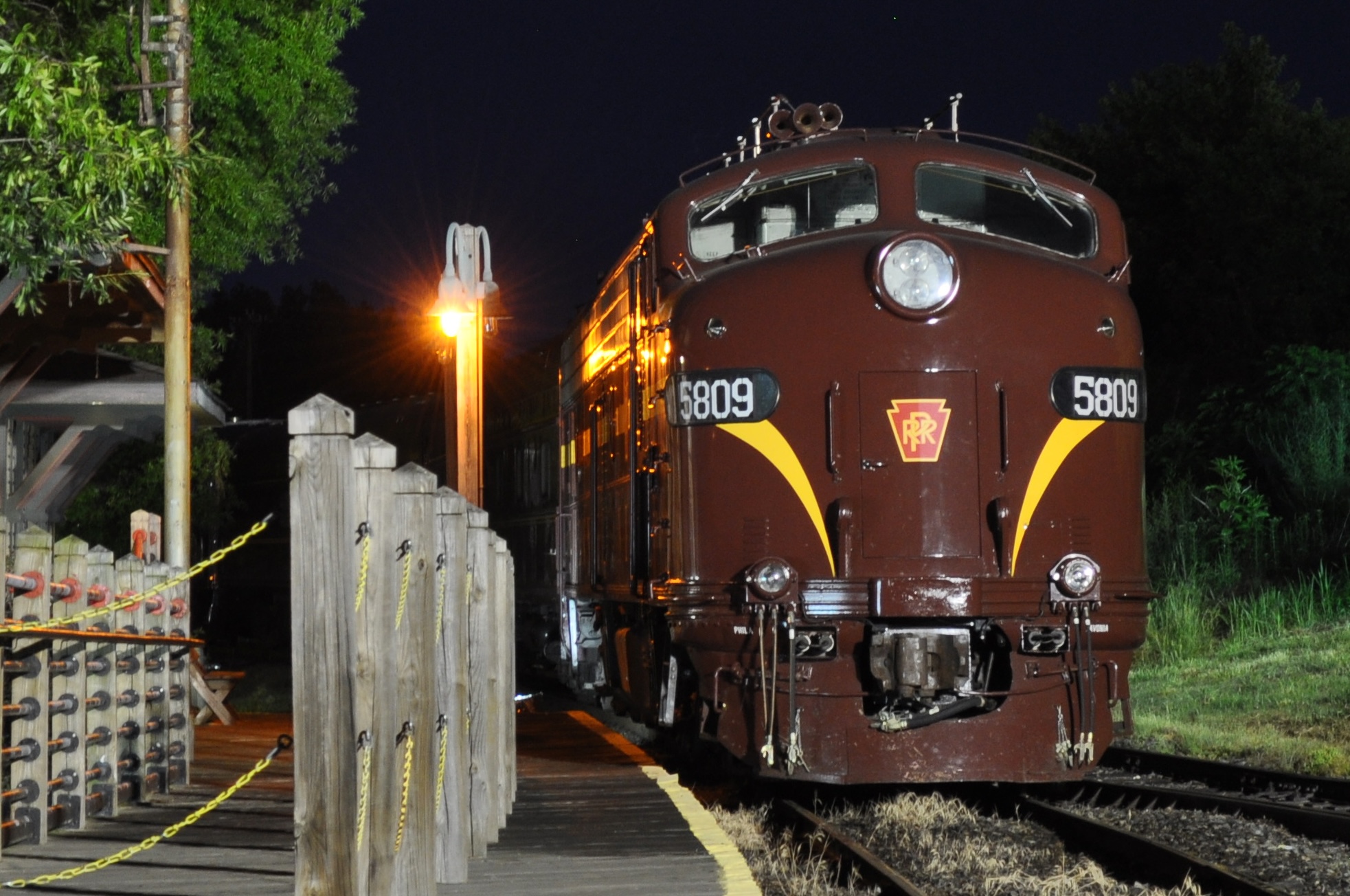 A beautifully restored Pennsylvania RR #5809 was one of 25 EMD cab units to participate in the
Streamliners at Spencer (NC) event in 2014.
A beautifully restored Pennsylvania RR #5809 was one of 25 EMD cab units to participate in the
Streamliners at Spencer (NC) event in 2014.
| |
#4021 -- Built as Pennsylvania #5711, this E8A (EMD 16780) was one of six passenger cab delivered to the railroad during September/October 1952. Its history closely parallels that of running mate #4020 (described above), including the years as Penn Central 4311, Amtrak 499/317, Conrail 4021, and restoration as PRR 5711. | |
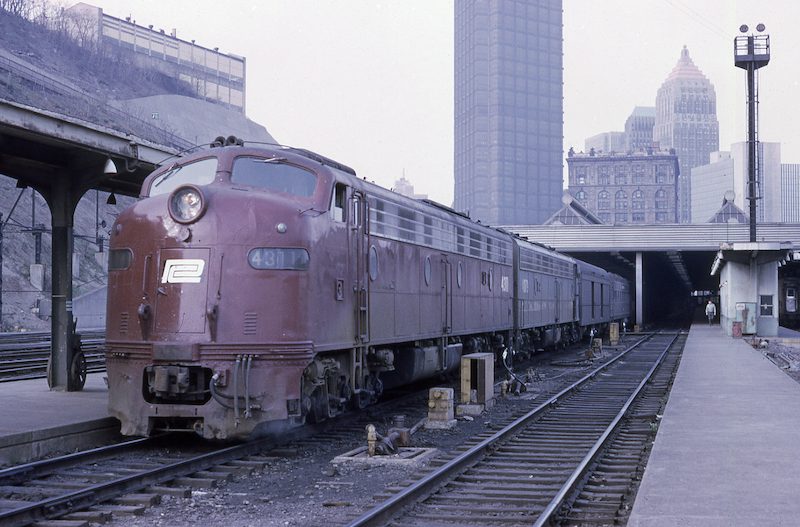 PC #4311 still wears Pennsy tuscan red garb at Pittsburgh, PA in May 1971 (Adam Klimchock
collection)
PC #4311 still wears Pennsy tuscan red garb at Pittsburgh, PA in May 1971 (Adam Klimchock
collection)
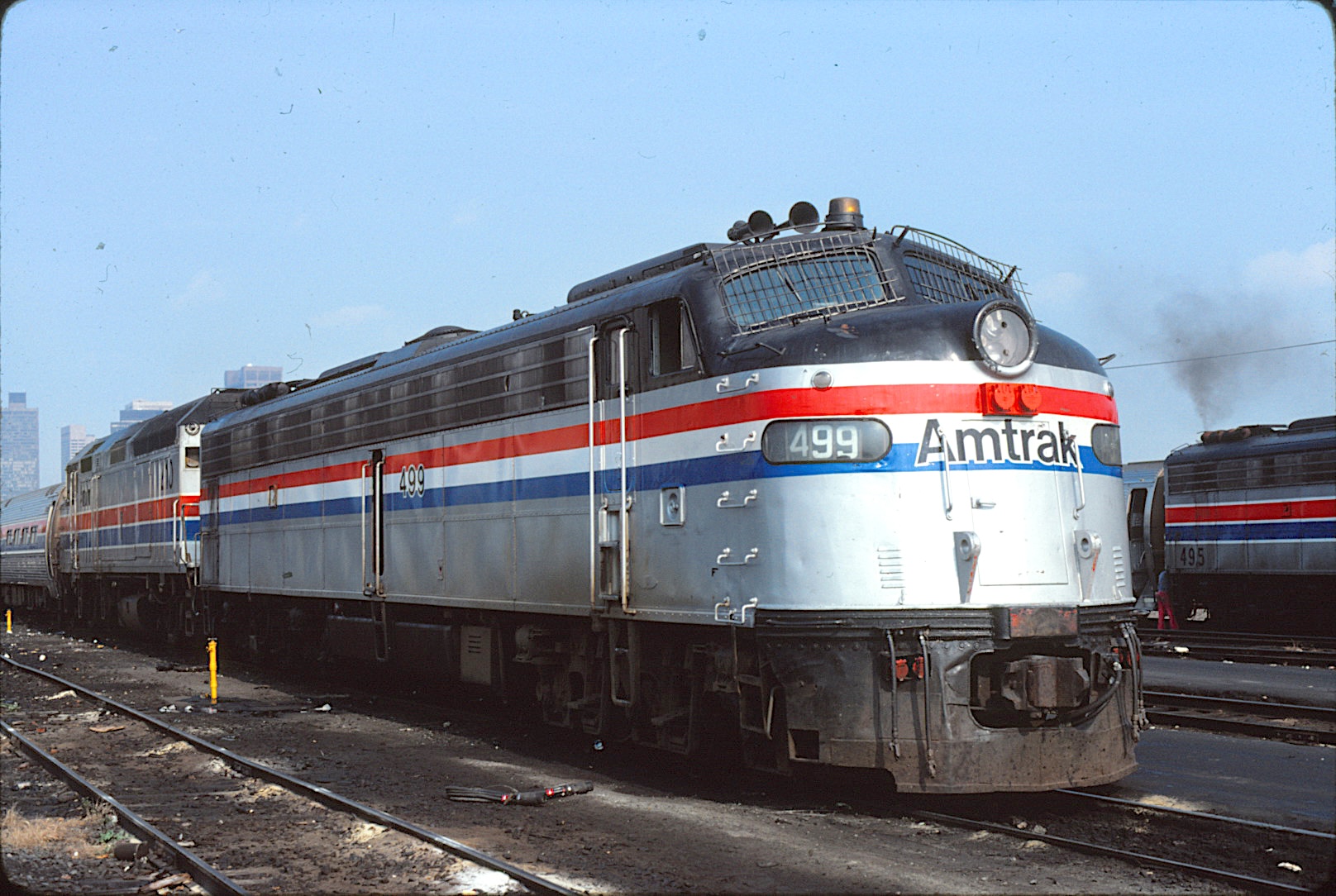 Amtrak #499 (in Phase 3 paint) waits at Boston's South Station on 20 October 1979 (George
Turnbull photo)
Amtrak #499 (in Phase 3 paint) waits at Boston's South Station on 20 October 1979 (George
Turnbull photo)
| |
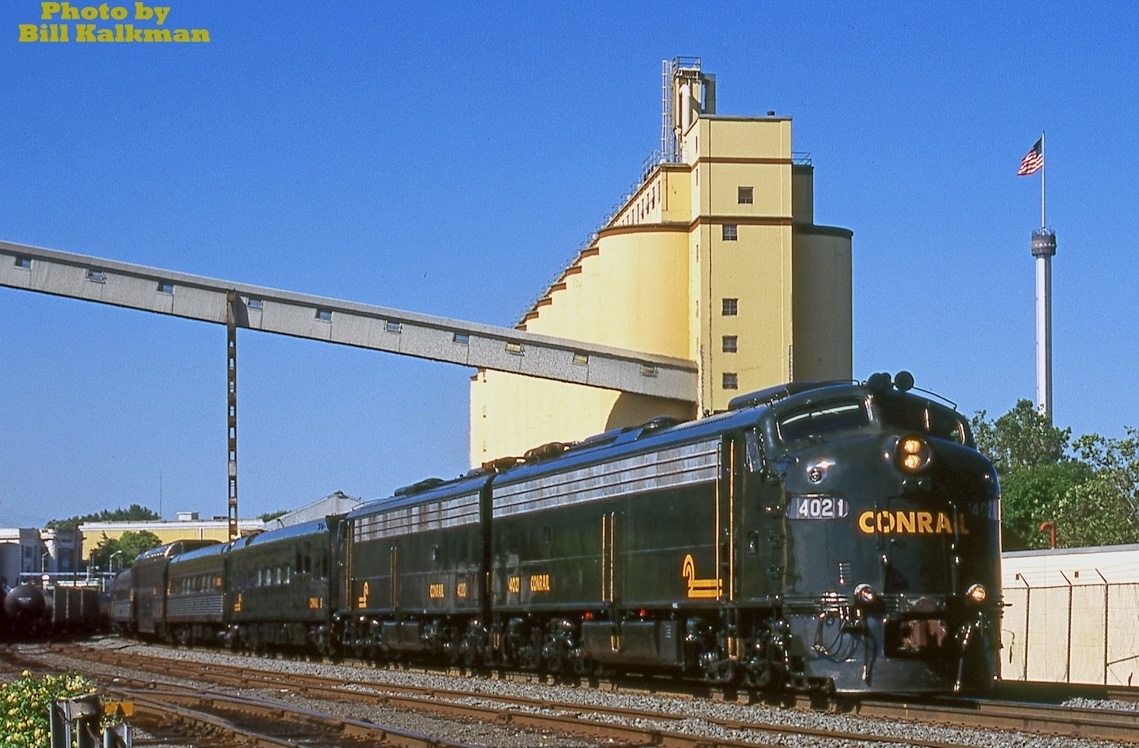 Conrail #4021 leads an E/B OCS through Hershey, PA on 13 June 1995; note the full length dome
in pullman green. (Bill Kalkman photo)
Conrail #4021 leads an E/B OCS through Hershey, PA on 13 June 1995; note the full length dome
in pullman green. (Bill Kalkman photo)
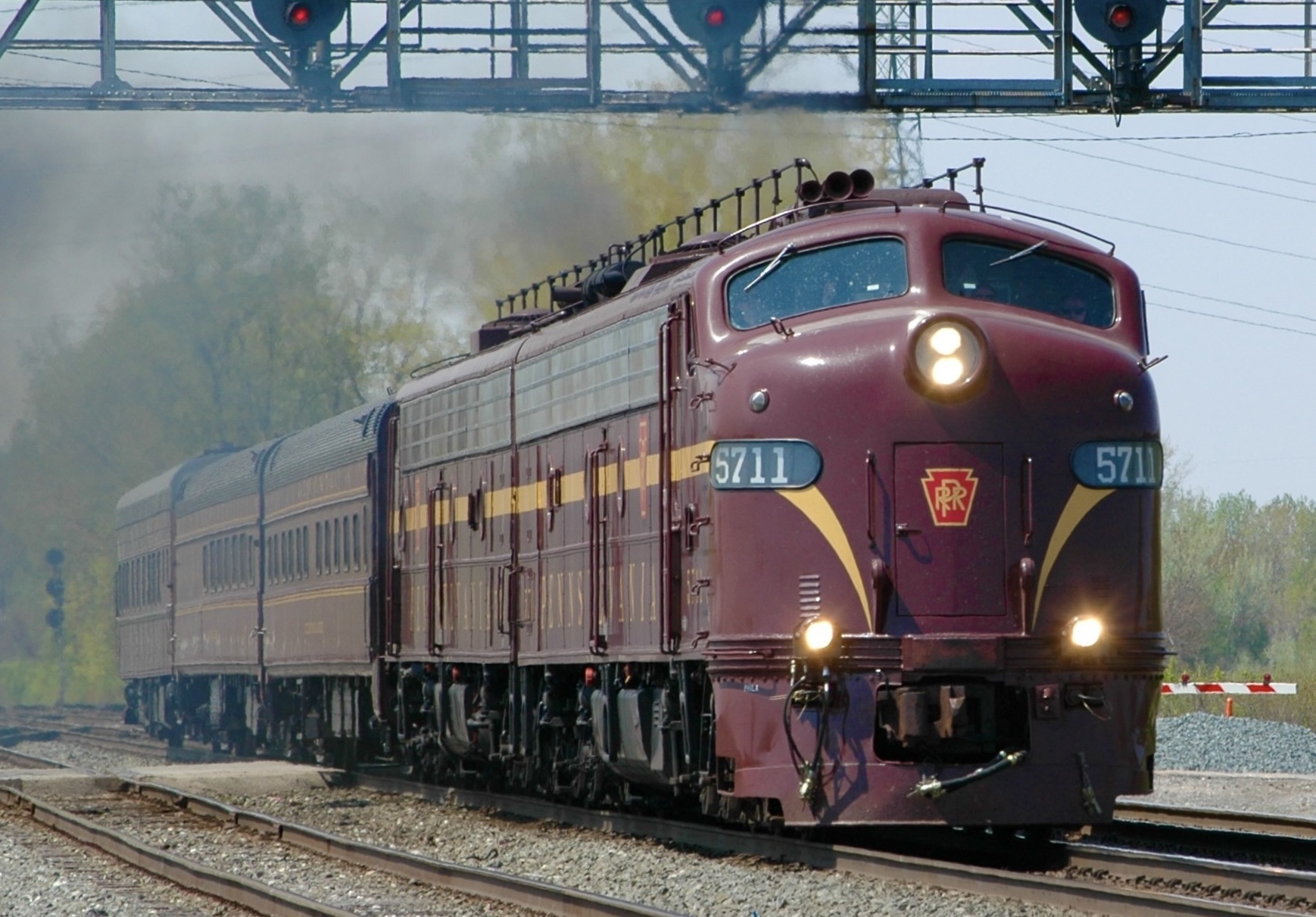 Bennett Levin's #5711 scoots through Millbury, OH on 8 May 2011
Bennett Levin's #5711 scoots through Millbury, OH on 8 May 2011
| |
|
SOURCES: RAILROAD.NET Photos are by R. Craig Unless otherwise stated. |
|
| New: 1 June 2025 | |
